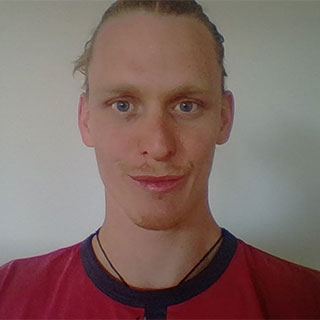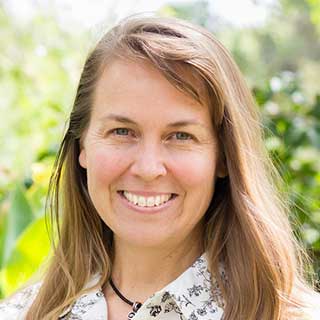Module 2:
How can metastatic breast cancer be treated?
The second module within the sequence focuses on developing an understanding of the research into treatments of metastatic breast cancer including the identification of molecules. This module introduces the work of Professor Leigh Ackland.
Summary
VCE Biology (2017-2021)
Unit 3, Area of Study 2, Outcome 2, VCE Biology Study Design
Key knowledge
- Cellular signals
- the stimulus-response model when applied to the cell in terms of signal transduction as a three-step process involving reception, transduction and cellular response
- Immunity
- the use of monoclonal antibodies in treating cancer
With a focus on:
- The actions of different drugs
- How molecules are labelled
Duration

Student learning outcomes
Upon completion of this module students will be able to:
- Appreciate the evolution of drug design based on scientific research
- Understand the difference between chemotherapy and targeted therapy
- Understand that signalling molecules induce cellular changes and responses in cells such as epithelial cells
- Appreciate the nature of scientific research: immunofluorescence as a staining technique
Teacher background information
Module description
In addition to radiotherapy and surgery, therapies include: hormonal therapy, chemotherapy and targeted therapies. Molecular biologists around the world are working to understand and quantify the molecular processes underlying breast cancer spreading with the intention to develop drugs that will target steps in the process to prevent the spread. Targeted therapies hold the hope of being able to treat cancer directly without or limiting the effect on normal cells.
In order to spread, breast cancer carcinomas change their structure and behavior to reflect a mesenchyme cell that enables them to leave the tumor tissue and enter the lymph and or blood. It is the molecular mechanisms that enable this change that Professor Ackland and fellow researchers have focused their attention. One group of drugs that target cancer/tumor cells are signal transduction inhibitors. Experiments by Professor Ackland and other research scientists have revealed that epithelial growth factor (EGF) induces epithelial-mesenchyme transitions in human breast carcinoma cells and have identified changes in other molecules. In order to leave the primary tumor, carcinoma cells (cancers of the epithelial cells) amongst the epithelial tissue must become mesenchymal, which by their nature, are able to detach themselves from other cells and become mobile.
Resources
Video
Targeted Cancer Therapy (4:30)
This video provides visual animations and discusses the two types of targeted cancer therapies: signal transduction inhibitors and monoclonal antibodies.
Article
Analogies in Oncology: Explanations Made Easier
This is an article from a journal using analogies to explain the difference between chemotherapy and targeted therapies
Research paper
Epidermal growth factor-induced epithelio-mesenchymal transition in human breast carcinoma cells.
Ackland, M.L., Newgreen, D.F., Fridman, M., Waltham, M.C., Arvanitis, A., Minichiello, J., Price, J.T. and Thompson, E.W., 2003. Epidermal growth factor-induced epithelio-mesenchymal transition in human breast carcinoma cells. Laboratory investigation, 83(3), pp.435-448.
Teaching sequence
Inquiry Question
How can we stop metastatic breast cancer spreading?
Student learning outcomes
On completion of this module, students will be able to:
- Understand the difference between chemotherapy and targeted therapy
- Understand that signalling molecules induce cellular changes and responses in cells such as epithelial cells.
- Appreciate the nature of scientific research: immunofluorescence as a staining technique.
Duration

Prior Knowledge
The students have studied how metastatic breast cells (carcinomas) spread from a macro-perspective: focusing on the change in the cell phenotype that results from a signalling molecule, enabling it to detach, digest or penetrate the cell membrane and enter the blood or lymphatic system.
Activities
[Engaging, Exploring, Explaining]
Activity 2.1 - How can we stop epithelial-mesenchymal transitions? (20-30 minutes)
Before watching the video about Noreen’s story (Refer to Video: Metastatic Breast Cancer Explained), the students are asked to think about therapies. Asking the questions in this way, students are prompted to think and ask, ‘If it doesn’t happen randomly as a result of a genetic mutation, what causes it to happen?’ and see the possibility of intervening as a powerful result of scientific investigation. Part 2 starts with Noreen’s story – a woman living with metastatic breast cancer. Researching drugs involved in treating metastatic breast cancer is intended to probe an understanding for how they work and the focus is directed to targeted therapies and their reliance on the molecules involved in the stimulus response mechanism.
Video: Metastatic Breast Cancer Explained
The questions are written on the board or asked before the video:
- How long is someone diagnosed with metastatic breast cancer expected to live?
- By how long has the woman with metastatic breast cancer outlived the expected survival rate for this cancer?
- How has she survived?
Think-Pair-Share and Whole Class Brain-Storm
The students review what they have learned about cancer and how tumor cells migrate and then brainstorm ways they think or understand metastatic cancer can be treated. The question, “what are ways that it could happen?” prompts mathematical-logical thinking.
Web-quest
This task is in two parts:
- Students are asked to search the web to find and list as many cancer therapies and to group them if they sound similar. After 5-10 minutes, a list is written up on the board and different therapies are grouped for being: general or specific/targeted and for targeted drugs, what components of the body they are targeting. Students add this information into their exercise books.
- Students then direct their search to answer the following questions.
- Which therapies are targeted cancer therapies?
- What do these drugs do in the body?
- How are molecules for targeted cancer therapies identified?
The following websites can be used to assist their search
- Targeted Cancer Therapies Fact Sheet – National Cancer Institute
- Treatment options for metastatic breast cancer: Cancer Australia was established by the Australian Government in 2006 to benefit all Australians affected by cancer, their families and carers.
Making Analogies
The Teacher and students can explore the analogy between chemotherapy and targeted therapy to elucidate the benefits of targeted therapy.
Pros and Cons
The students can extend their research to weigh up the pros and cons of a therapy. Including its success rate, side effects and cost.
[Elaborating]
Activity 2.2 - How do we identify molecules? Immunofluorescence. (30-40 minutes)
In this activity, the work of Professor Leigh Ackland is introduced. Students are introduced to the research context: human breast carcinoma cells have been taken from a woman by means of a biopsy and cultured in a laboratory for two years. In groups students are given different molecules (target) to answer questions about immunofluorescence as a method for labelling different molecules (targets). The identification of some of the molecules is then later capitalized on in the roleplay in Module 3 when some students pretend to be the molecules before and after the cell is induced to change from an epithelial to a mesenchymal cell. After a think-pair-share activity, the students watch a video about immunofluorescence that demonstrates with subtitles (and music) the process. To engage the students in the notion of fluorescence as a scientific technique they can make glow sticks.
Video: Immunofluorescence
Think-Pair-Share
Students are asked, “why can’t we see molecules in a cell under a microscope?” and “How could we identify molecules that are invisible even under a microscope.”
Results Analysis Activity
Students are given table 1. from the research paper (Table 1. Molecular Labels Used in This Study p. 444) and students are given the different molecules to research. They must answer:
- What is a molecular target?
- What does your molecular target do?
- What does your probe do? How does it interact with your target?
- In your own words, what is immunofluorescence?
The teacher can then create a table on the board to collate the answers.
Option: Make glow sticks
Students can make glow sticks using clear straws (sealed by the teacher before and after), vegetable oil and strontium aluminate, a beaker, rod and syringe. They will charge best under UV light. LEDS are not effective.
Next module: The stimulus response model and signal transduction.
 Contemporary VCE Biology
Contemporary VCE Biology


